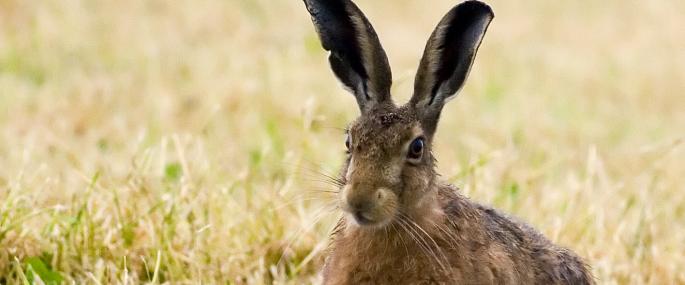Brown Hares graze on vegetation and nibble bark from young trees and bushes. Hares shelter in a 'form', which is simply a shallow depression in the ground or grasses, but when disturbed, can be seen bounding across fields using their powerful hind legs to propel them forwards, often in a zigzag pattern. They are commonest in grassland and at woodland edges. In early spring, Brown Hares are at their most visible as the breeding season encourages fighting or 'boxing'.
The once common Brown Hare has seen a dramatic decline in numbers due to changing agricultural practices affecting its favoured grassland habitats. Shooting and coursing have also had an impact on it. Working with farmers and landowners to ensure wildlife-friendly practices, The Wildlife Trusts are working towards a Living Landscape: a network of habitats and wildlife corridors across town and country, which are good for both wildlife and people. You can support this greener future by joining your local Wildlife Trust.
